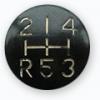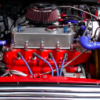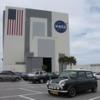I thought somewhere in that document it was mentioned that after the fuel pump is energized initially, a signal from the crankshaft sensor was required to keep the fuel pump relay energized. I cannot seem to find that reference at the moment, but it should be in this section:
FUEL PUMP OPERATION
One side of the fuel pump relay coil receives battery voltage from fuse A4 in the
passenger compartment fuse box on a W wire provided the starter switch is in
position II. The other side of the relay coil receives an earth on a BP wire from
the MEMS control unit provided the correct operating conditions exist, (see
Engine Management System) causing the relay to energise.
The energised relay switches battery voltage from link 4 in the engine
compartment fuse box on an N wire, via fuse C7 in the passenger compartment
fuse box to the inertia fuel shutoff switch on an NS wire. Provided the inertia fuel
shutoff switch remains closed, battery voltage is fed on a WP wire to the fuel
pump. Since the pump has a permanent earth on a B wire it will commence
operation.
Possible issue for an automatic:
Inhibitor switch
The switch fitted to the gearbox inhibits operation of the starter motor unless the
selector lever is in position P or N.
With the selector lever in position P or N the inhibitor switch will provide an earth
path for the starter relay on a BLG wire which will allow the engine to be started.
If the selector lever is in any other position than P or N, the inhibitor switch will
not provide an earth path, so preventing the vehicle starting.
The inhibitor switch also provides the ECM with an input so that idle speed is
automatically adjusted when a drive position is selected.

















